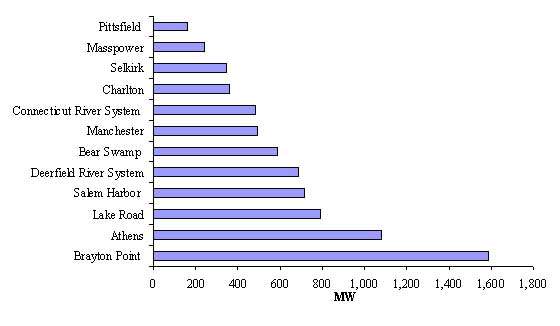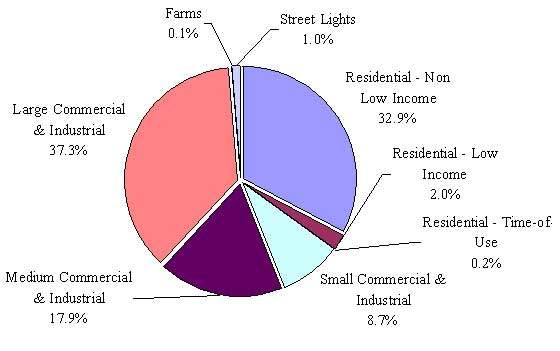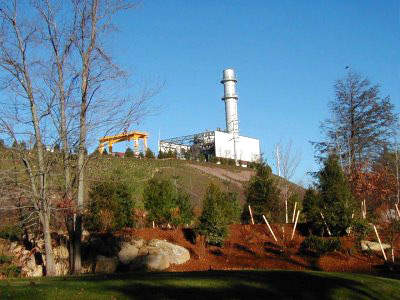The 360MW Charlton Power Plant has won an Engineering Excellence Award for its wastewater treatment system. The plant is a combined-cycle natural gas turbine (CCGT) facility in Massachusetts, US. It was begun in 1998, and began commercial operation in April 2001.
The plant cost around $200m and is owned by USGen affiliate Millennium Power Partners (MPP), wholly owned by subsidiaries of PG&E Corporation (it was previously managed by LS Power). The 2005 Engineering Excellence Award was awarded by the American Council of Engineering Companies of Massachusetts (ACEC/MA).
Charlton functions as a merchant power plant, and a key priority in both procurement and operation was keeping costs as low as possible. The plant was constructed by Bechtel.
The turbine and most of the components surrounding it were supplied by Siemens Westinghouse, which is giving a warranty on the combined-cycle system as well as signing a long-term parts and maintenance agreement. This servicing agreement is the key to keeping MPP’s costs manageable.
PLANT HAS READY GAS SUPPLIES AND EASY ACCESS TO GRID
The plant was sited at Charlton for two reasons. The first was a ready supply of natural gas from the Tennessee pipeline. The second was its access to the transmission grid, and helping to meet New England’s power supply needs. To gain permission to build, the plant had to agree to make any transmission upgrades necessary.
The plant also had to meet environmental concerns by setting aside land, with a ‘special permitting’ use for wastewater effluent. This effluent comes from a nearby wastewater treatment plant and is used for wet cooling.
AWARD FOR WASTEWATER TREATMENT
The plant uses secondary treated wastewater from the Town of Southbridge’s municipal wastewater treatment plant (WWTP). Factors complicating this wastewater reuse were regulatory acceptance, distance between the WWTP and the power plant, crossing of environmental resources and a steep slope within the project site.
Weston & Sampson performed an initial assessment of cooling water need, wastewater quality and tertiary treatment. It then made a facilities layout and pipeline routing study along with final design and construction.
The wastewater reuse system provides up to 2.75 million gallons per day of cooling water to the power plant. Treated effluent, supplemented seasonally with water from the Quinebaug River, provides cooling water on a continuous basis. Cooling water waste is returned to the WWTP to be treated and reused. The sustainable system mitigates environmental impacts to local water resources, and a financial resource to Southbridge.
AMERICAN POWER MARKET STILL GROWING
The American market is seeing a strong demand for additional generating capacity. This is driving not only MPP, but also other companies to invest in the power generation sector and take advantage of the (in some areas) relatively high prices.
Massachusetts, and New England in general, has some of the highest electricity prices in the US. Massachusetts is a good market because much of the present generating capacity is old as well as unclean and less efficient. As this is replaced, there will be a greater demand for clean low cost electricity.
SIEMENS WESTINGHOUSE 501G TURBINE
The main elements in the plant are: a Siemens Westinghouse gas 501G combustion turbine, a three-pressure natural circulation heat recovery steam generator and an axial flow two-case condensing steam turbine. The Siemens Westinghouse 501G gas turbine at Charlton has a 240MW output. The rotor inlet temperature is 1,417°C, the air flow 544kg, and the pressure ratio 19:1. The turbine has 16 compressor stages and four turbine stages. It has six cooled rows and an exhaust temperature of 593°C. This is a higher pressure ratio and firing temperature than Siemens Westinghouse’s 501F turbine. This allows the newer version greater efficiency.
The turbine was chosen for its low capital cost (a central concern in a merchant power plant) and low fuel consumption (helping reduce costs). A 50% greater efficiency was claimed than for the existing generating base in New England.
STEAM SYSTEM HAS 122MW OUTPUT
The steam turbine has an output of 122MW. A key to the high efficiency is the use of the steam from the heat recovery steam generator. The cooling steam is returned to the steam turbine as reheat. The system also takes two streams of cooling air from the compressors. These are used to cool the rotating blades, the vanes and the turbine rotor. The cooling air is put into two-kettle type reboilers to produce more steam.
There is also a fuel gas heater which uses water from the intermediate pressure system of the heat recovery steam generator to heat the fuel gas above 204°C. The cooling steam system, the cooling air system and the fuel gas system are all linked to the heat recovery steam generator in a cycle. This link, combined with the integration of the gas turbine, allows the 501G to achieve 58% efficiency. The key to this is the clever use of waste energy.
The plant also has low nitrogen oxide and carbon monoxide emissions. This was important for gaining permission to build in a densely populated area like New England. To reduce NOx, the plant used selective catalytic reduction and dry, low NOx combustors.






